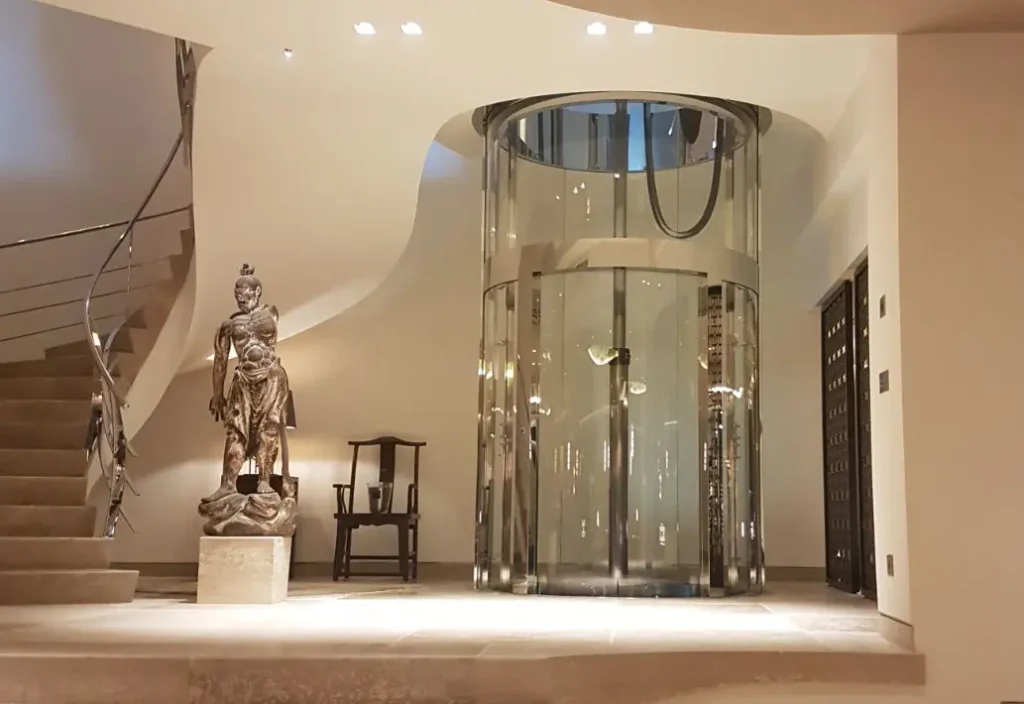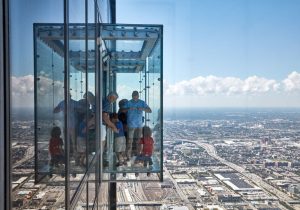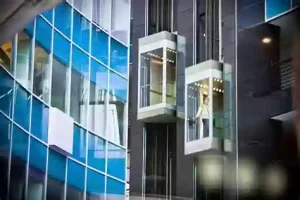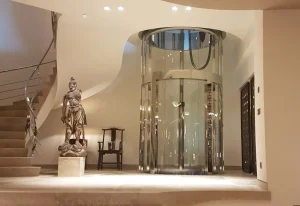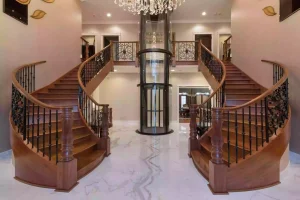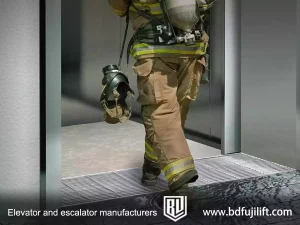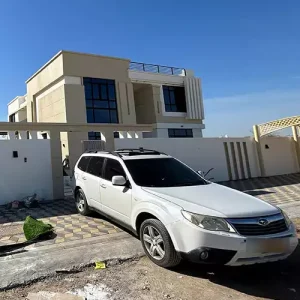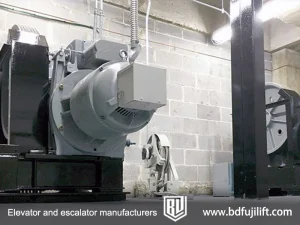Glass elevators are vertical lifts that use a transparent or translucent panel (usually tempered glass) as the car or shaft. They are increasingly practical and customizable, and are often used for home elevators, sightseeing elevators, and barrier-free elevators for public facilities.
Common glass elevator types
- Panoramic/sightseeing elevators – designed to provide a panoramic experience, they are usually installed in shopping malls, hotels, or high-rise office buildings.
- Circular glass elevators – cylindrical, provide a 360-degree panoramic view, and are eye-catching architectural elements.
- Traction glass elevators – use steel cables and counterweights; suitable for medium- and high-rise buildings with transparent shells.
- Hydraulic glass elevators – driven by fluid pressure, better suited to low-rise buildings with limited shaft space.
- Pneumatic glass elevators – driven by air pressure (vacuum technology), ideal for villas and small indoor spaces.
- Building facade glass elevators – exterior elevators are not only functional, but also enhance the style, especially for renovation projects or scenic locations.
Which type of glass elevator is best for residential homes?
Choosing a home glass elevator requires a balance between visual appeal and space constraints. In residential buildings with limited floor space, pneumatic home elevators and hydraulic elevators are popular for their space efficiency and low structural requirements.
Pneumatic elevators do not require a pit or machine room, making them ideal for duplex apartments or villas. Residential glass elevator designs can also be customized with matte, frosted or transparent finishes to match interior decor.
A homeowner in Singapore chose BDFUJI’s three-station glass elevator shaft model to renovate a 1970s townhouse. The self-supporting structure occupies only 1.2 square meters and was installed in just 5 days without the need for excavation.
Are glass elevators safe and durable?
Don’t worry that clear glass elevators are fragile. Most glass elevators are made of 12-19 mm laminated tempered glass, which can withstand strong impacts and temperature changes. They also have the following features:
- Emergency stop system and battery backup
- Infrared door sensor and fall protection
- Weatherproof seal for outdoor use
If you are considering installing a glass elevator on the exterior of a building, choose materials that are UV-resistant and corrosion-resistant. Many glass elevator manufacturers, such as BDFUJI Glass Elevator, use advanced coatings to provide better performance and durability in extreme climates.
How much do glass elevators cost?
Prices for glass elevators vary depending on type, size, features, and installation, and typically range from $25,000 to $100,000.
| Type | Starting Price (USD) | Ideal Use |
|---|---|---|
| Air-Driven Home Lifts | $30,000 | Villas, small homes (no pit needed) |
| Hydraulic Lifts | $25,000 | Low-rise homes |
| Traction Lifts (glass) | $40,000 | High-rise or mid-rise buildings |
| Observation Elevator | $50,000 | Hotels, commercial buildings |
| Round Glass Elevator | $60,000 | High-end residences or lobbies |
Maintenance costs are about $1,500 to $3,000 per year, depending on usage and system type. Modular systems and predictive maintenance can reduce unexpected costs.
Investing in an elevator is like investing in a car: a luxurious interior costs more upfront, but energy-efficient motors and smart controls can save you money in the long run.
What are the advantages of a circular or panoramic glass elevator?
Circular glass elevators are a popular choice for shopping malls, hotels, and corporate buildings with their 360-degree visibility. Panoramic commercial glass elevators can also increase real estate value by improving user experience and brand reputation.
According to a 2024 survey by Elevator Insight Group, adding a panoramic glass elevator to a luxury residential complex increased the property’s appeal by 18%.
BDFUJI is a trusted glass elevator manufacturer that offers fully customizable panoramic elevators with smart controls, multi-language voice systems, and curved or flat glass options for both indoor and outdoor glass elevators.
Can glass elevators be installed outdoors or in historic buildings?
With modern technology, glass elevators can adapt to almost any environment, even historic building facades or mountain resorts.
Outdoor glass elevators have greater structural integrity and weather resistance. When shopping for a glass elevator, be sure to choose a model with the following features:
- Sealed stainless steel frame
- Rust-resistant coating and temperature control
- Wind load-resistant structure
In historic buildings, pitless elevator models, such as pneumatic elevators, are ideal because they do not require extensive foundation modifications. Transparent shafts can minimize damage to the building, thereby maintaining the visual and architectural integrity of the building.
How to choose the right glass elevator?
Core Value: The right choice depends on space, use, budget, and design goals—and is guided by experts.
Here is a quick decision framework:
- Limited indoor space? → Choose a pneumatic home elevator
- Want quiet and affordable? → Choose a hydraulic elevator
- High traffic or high height? → Use a traction elevator
- Need elegance and a view? → Choose a panoramic elevator or circular glass elevator
- Outdoor installation? → Choose a weatherproof commercial glass elevator
Glass elevators combine aesthetic appeal with safety. Whether you are upgrading a home or renovating a commercial space, choosing the right type of glass elevator can improve accessibility, enhance design value, and show modern elegance. Thanks to innovations in energy efficiency, safety, and smart integration, today’s glass elevators are more than just a luxury, they’re a smart investment.
BDFUJI offers a full range of glass elevator models, solutions for residential and commercial environments tailored to your vision, backed by global certifications and local service support.


